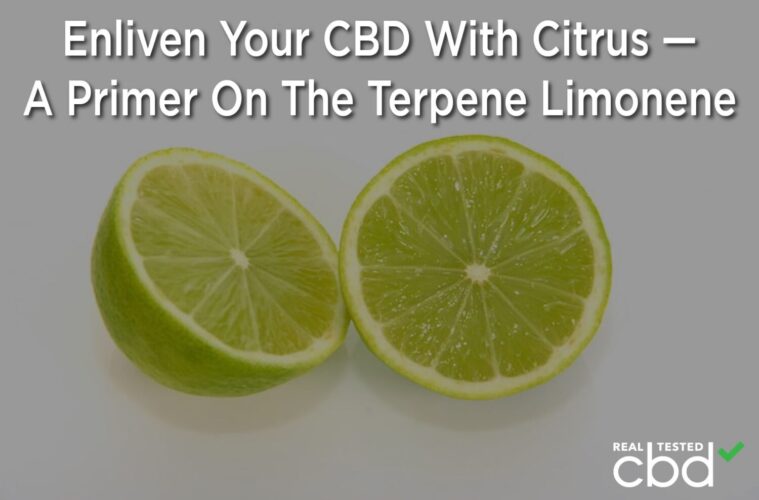Read the original article about the Terpene Limone here.
Although cannabinoids are endlessly fascinating, they aren’t the only compounds in the hemp plant. Indeed, if it weren’t for chemicals known as “terpenes,” hemp strains wouldn’t have any distinctive aromas. While terpenes aren’t unique to cannabis, they play a significant role in determining a strain’s effects and taste.
If you’ve purchased high-quality hemp flowers, vape carts, or CBD prerolls, you’ve probably run across the terpene “limonene” in lab reports. Along with myrcene and beta-caryophyllene, limonene is considered a “primary terpene” because it appears in many hemp strains.
So, what does a high limonene concentration mean? How does this terpene affect a hemp product, and is it the best choice for your CBD goals?
How Does Limonene Influence CBD Hemp Flowers?
You don’t have to be a chemistry professor to guess what limonene smells like. True to its name, limonene is the primary terpene in citrus peels. Aside from lemons, you could get a whiff of limonene in fruits like oranges, grapefruits, and limes.
Unsurprisingly, hemp strains with high limonene concentrations will have tart & citric overtones. Limonene could also contribute to the sharp “gassy” and industrial notes in many diesel strains.
While limonene’s primary flavors are self-explanatory, there’s still debate over its effects. Since sativa-forward hemp strains tend to have high amounts of limonene, many people assume limonene can induce “euphoric” and “head-rush” effects. On the other hand, some studies suggest limonene may have relaxing effects on the central nervous system.
In most cases, people gravitate towards limonene-heavy hybrids when they want to feel stress-relief without deep relaxation. Just keep in mind these “standard effects” are based on anecdotal testimonies. Your experience with limonene-rich hemp might be different from the norm, so be sure to test this terpene in a controlled environment when you have plenty of free time.
Where Could You Find High Limonene Strains?
As hinted above, sativa-forward hemp strains often have the highest concentrations of limonene. Usually, you could get a good feel for whether a hybrid has a lot of limonene by looking at its name.
For example, if a hemp hybrid is in the “Diesel” family, you can assume limonene plays some role in its gasoline flavor. Also, most strains with “Sour” in their title have significant amounts of limonene.
Here’s a brief list of the most significant strains with super high traces of limonene:
- Sour Diesel
- Lifter
- Sour Space Candy
- Hawaiian Haze
- Durban Poison
Remember that a hemp breeder’s skill could alter the terpene percentages in the final cultivars. There’s also no telling how many terpenes manufacturers purify from their final CBD extracts. While full-spectrum CBD oils have higher terpene counts than broad-spectrum tinctures, that doesn’t mean limonene will always be present in these CBD products.
The only way to objectively determine how much limonene is in your hemp-derived goods is to ask for a third-party lab test. These lab reports should give you a glimpse into the total terpene percentages to see how much limonene will influence your experience.
Looking For Limonene? Check Out Real Tested CBD’s Lab Reports!
Many people crave limonene in their hemp strains. If you’re a fan of sour candies and uplifting effects, you’ll be right at home using hemp-derived CBD products with above-average limonene concentrations.
If you want to learn more about scanning for terpenes in lab reports, we’d suggest reading through Real Tested CBD’s website. Over the years, we’ve reviewed dozens of CBD brands for quality assurance, and we post all of our unbiased results online. After reading through our website, you’ll learn how to properly screen CBD products for potency and quality.
To learn more about hemp terpenes, visit us at RealTestedCBD.com!
Advertising disclosure: We may receive compensation for some of the links in our stories. Thank you for supporting Irvine Weekly and our advertisers.


